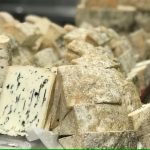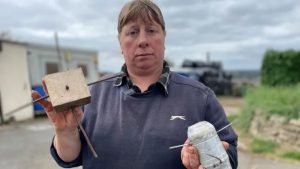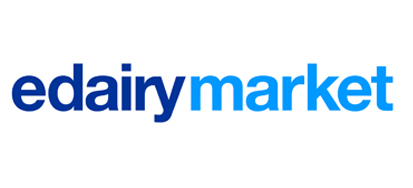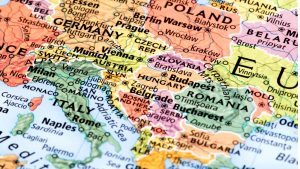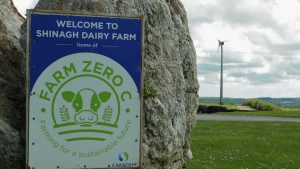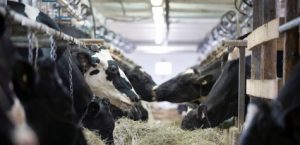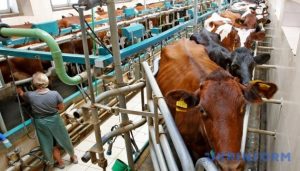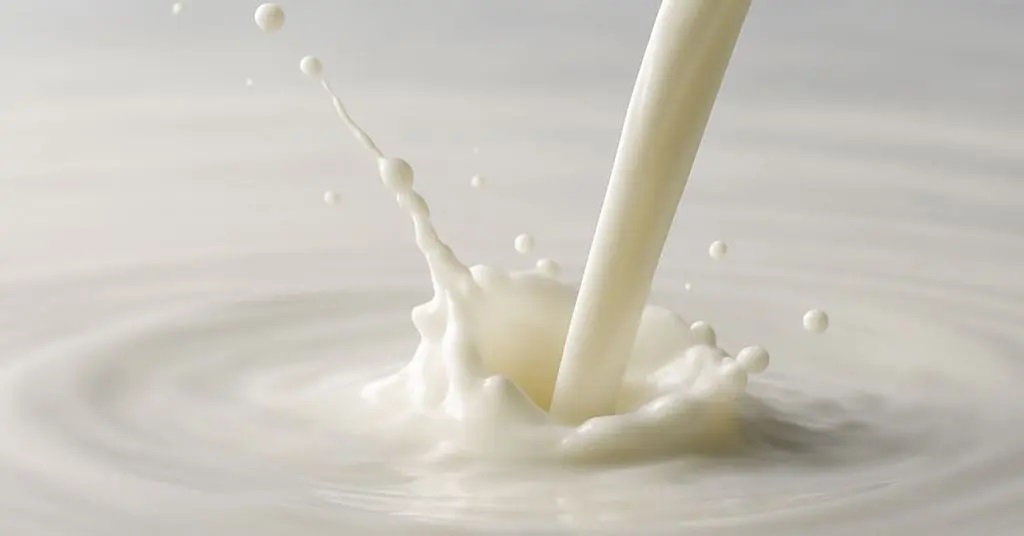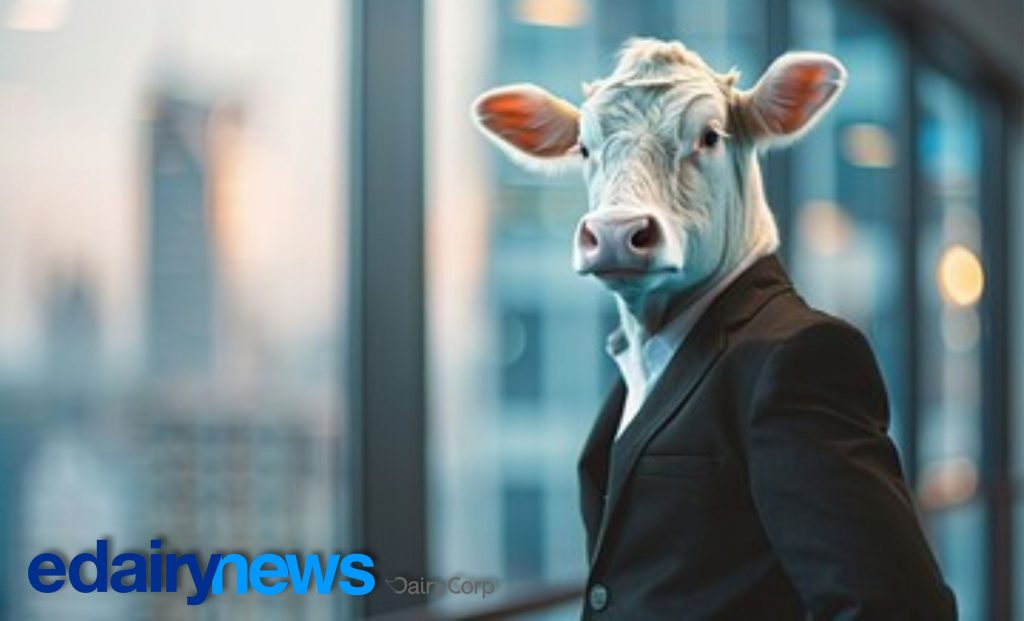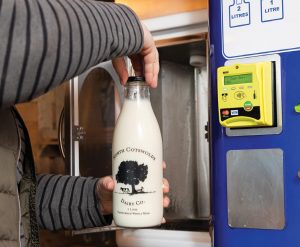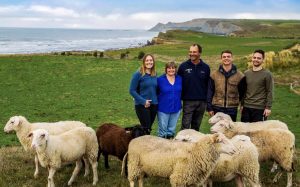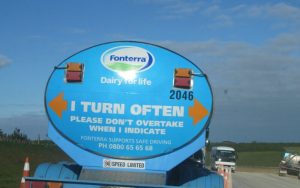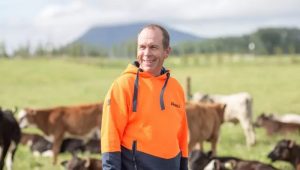
La Ferme de la Tremblaye is a regenerative dairy farm in the Ile-de-France region.
La Ferme de la Tremblaye sits on the border of the Rambouillet forest in the Yvelines department in the Ile-de-France. In the small village of La Boissière-Ecole (population: 784), 70 miles from the center of Paris, the dairy farm encompasses some 590 acres of farmland and 657 acres of forest.
About 220 cows and 600 goats live peaceably here, producing the milk that is used for the cheese for which the farm is known.
Though Paris sits smack-dab in the middle of the Ile-de-France, urban areas take up only 28% of the land, while forest and farmland occupy the rest. I once wrote about a baguette whose wheat was entirely produced and milled in the Ile-de-France, something hard to imagine in, say, the New York metro region.
On a personal trip to France last month, I visited the farm because its renown had reached all the way to Pittsburgh, where Chantal’s Cheese Shop in Bloomfield stocks its Brie and often a persillé de chevre (blue goat’s milk cheese).
The communications manager spoke to me in a meeting room in the farm’s shop, where we were later joined by the farm’s manager. They then took me on a farm tour and offered a quick cheese tasting.
 The farm has three breeds of cow, including Jersey cows, known for their rich milk.(courtesy of La Ferme de la Tremblaye)
The farm has three breeds of cow, including Jersey cows, known for their rich milk.(courtesy of La Ferme de la Tremblaye)Regenerative, energy-efficient
Prominent in the promotion of the farm’s products are its “agroecological” practices, which aim to respect the land, the animals and the farm’s 45 employees.
The farm uses a number of regenerative agricultural techniques, such as planting cover crops to nourish and protect the soil. Employing no-till practices, workers do not plow the land. No pesticides are used.
The farmers feed the animals with grain from the farm, as well as two neighboring farms.
“This allows us to prepare feed that is very targeted to the needs of our goats and cows,” said Marine Chabrol, the communications manager.
The staff does not necessarily feed the entire herd the same feed, but can adapt it if, for example, certain animals are pregnant.
“The diet is controlled and really managed from A to Z,” she said.
This attention to diet also has an effect on the taste of the cheese, the cheese producer maintains.
The farm has three cow and two goat breeds, notably Jersey cows and Murciano-Granadina goats, both known for producing rich milk that is high in protein.
Sought out for its blue cheeses and bloomy-rind soft cheeses (cheeses with an edible white rind, like Camembert and Brie), Ferme de la Tremblaye produces close to 400 tons of cheese annually. Many have the designation of “fermier” or farmstead cheese, meaning that it is produced wholly on the farm, including the milk. A few products, which use milk from a nearby organic farm, are certified organic.
The farm says it is energy self-sufficient, or “energy positive,” producing more than enough electricity for its own uses. It puts animal manure, agricultural byproducts it can’t use to feed the animals and whey from cheese production into a methanizer, where microorganisms break it down and produce methane, which is then burned for energy.
The farm also uses wood from its forests to power water heaters, and says it replants trees at regular intervals. The sustainability of burning wood for fuel, however, is a matter of some dispute.
 The boutique of Ferme de la Tremblaye in La Boissière-Ecole, France.(courtesy of La Ferme de la Tremblaye)
The boutique of Ferme de la Tremblaye in La Boissière-Ecole, France.(courtesy of La Ferme de la Tremblaye)Roots in Haute-Marne
The farm manager, Baptiste Carrouché, joined our discussion later that afternoon and explained how a dairyman from the Haute-Marne region moved to the Paris region in 1967 to be closer to his customers. In the process, he transformed a farm and lived his dream of making cheese.
“In the beginning, it was a crop farm,” Carrouché said. “When he bought the farm, he said this land is really poor [quality]” with no organic matter.
The soil was improved with cow manure and slurry. Much later, in the 2000s, the farm took up more intensively the modern sustainable techniques it employs today.
The original owner, Chabrol said, was Jean-Noël Bongrain, founder of the Savencia group that today manages a portfolio of dozens of international brands.
The company expanded mostly by acquiring local companies grounded in their communities. The group and farm have since been passed down to his children.
In the ’50s, Bongrain had a crucial and early hit with Caprice des Dieux (“caprice of the gods”), a molded cheese whose mild taste likely fueled its success, first in France and then internationally. It was also aided by savvy marketing.
By the time Bongrain moved to Ferme de la Tremblaye in 1967 and began regenerating the land, Caprice des Dieux was already an international hit. Today, Savencia is one of the largest cheese producers in France, with a presence in the United States, South America and Europe. It recently provoked controversy by maintaining its operations in Russia despite the war with Ukraine.
In a March release, Savencia Fromage & Dairy reported 2024 sales of $7.8 billion.
Chabrol said Ferme de la Tremblaye was “simply Jean-Noël Bongrain’s personal and historic farm” with no link to the Savencia group. A Savencia web page lists Ferme de la Tremblaye among its brands, but Chabrol said this was an error that will be removed.
 A worker at la Ferme de la Tremblaye in La Boissière-Ecole, France.(courtesy of La Ferme de la Tremblaye)
A worker at la Ferme de la Tremblaye in La Boissière-Ecole, France.(courtesy of La Ferme de la Tremblaye)All about that Brie
“The Brie that we sell, in the U.S. market, there’s nothing [else] of that quality that we have found,” said Chris Loughran, who co-owns Chantal’s Cheese with his wife Anaïs.
Both have dealt with the cheesemaker through an importer that carries small-batch artisan cheeses from Europe and the U.S. They were not aware of the corporate connection because the farm’s marketing materials that they had seen, including the website, do not mention it.
On being told, Chris Loughran compared the Savencia link to “a growing theme” of small cheesemakers being acquired by large conglomerates, especially in the U.S.
Still, he appreciates the quality of the products he buys from Ferme de la Tremblaye, on “the fact that they are very focused on sustainability, that their product is very good.”
As Loughran notes, Brie is traditionally made with raw milk, which U.S. regulations prohibit (unless a cheese is aged 60 days). Creating a Brie using pasteurized milk would require financial means that most artisanal cheesemakers do not have.
“We found a Brie that was really good and we were allowed to sell here, and that’s why we have it,” he said.
You can now read the most important #news on #eDairyNews #Whatsapp channels!!!
🇺🇸 eDairy News INGLÊS: https://whatsapp.com/channel/0029VaKsjzGDTkJyIN6hcP1K

